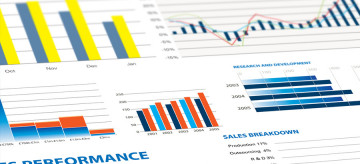- Advertising
- Bare Metal
- Bare Metal Cloud
- Benchmarks
- Big Data Benchmarks
- Big Data Experts Interviews
- Big Data Technologies
- Big Data Use Cases
- Big Data Week
- Cloud
- Data Lake as a Service
- Databases
- Dedicated Servers
- Disaster Recovery
- Features
- Fun
- GoTech World
- Hadoop
- Healthcare
- Industry Standards
- Insurance
- Linux
- News
- NoSQL
- Online Retail
- People of Bigstep
- Performance for Big Data Apps
- Press
- Press Corner
- Security
- Tech Trends
- Tutorial
- What is Big Data
4 Customer Analytics You Can't Afford to Ignore

Never have we been able to know our customers as well as we do today, thanks to Big Data. We can now glean everything from where they live to how much money they make to where they spend their money online - all valuable when it comes to marketing and selling.
But with so much data available about our demographic, it can be a challenge to know what to pay attention to and what to ignore. Big Data can only go so far in helping us; the rest comes from how we apply our own expert knowledge to the numbers. Still, some analytics are more important than others.

Getting Down to the Data That Matter
While the data you need will be specific to your industry and products, in general, there are a few metrics that most marketers should be paying attention to:
1. Email Subscribers
If email is a major component of your marketing efforts, pay attention to who’s subscribing, and what they’re subscribing to.
For example, if you’ve published two whitepapers, “How to Choose a Cloud Computing Provider” and “10 Reasons to Choose Us for Your Cloud Computing,” you may see that you’re getting 75% more signups for the first one. This is great data, because it tells you that people aren’t interested in the second whitepaper, which uses more of a hard-sell approach.
What your subscribers are signing up for is as important as who and how many are signing up. The key is tweaking your emails to maximize results.
2. Clickthrough Rates
In those emails, you ideally want as many subscribers as possible opening the emails and clicking the links back to your site, which you have included within the message. While clickthrough rates will vary by industry, the overall average is about 3.6%. Knowing this, you
3. Social Media Follows
Here’s a caveat for this metric: Quantity does not mean quality. People use bots to automatically follow more people, so a portion of your followers won’t even care or pay attention to your message. Scroll through your brand’s social media followers and see if the majority of them fit your customer demographic. Sharing relevant, targeted content regularly will help you attract more quality followers.

4. Website Visits (and Conversions)
All marketing efforts include breadcrumbs leading back to your website. You want tons of web visitors, and if you sell online, you want as many of them as possible to convert to buying customers. Monitor your website visits monthly and match up fluctuations to marketing campaigns. Did you see a boost when you ran a particular promotion? Then it was a success. Did you see more visitors but fewer sales? Check to make sure the promotion is easy to use in the checkout process.
Don’t get intimidated with all the customer data you have access to, and instead focus on the metrics that best indicate how well (or poorly) a given marketing or sales effort is doing. Measure regularly so you can make changes to improve results.
Susan Payton is the President of Egg Marketing & Communications, a content marketing and social media firm. She’s written three business books, and blogs about small business on sites including Forbes, AllBusiness, The Marketing Eggspert Blog, and Tweak Your Biz. Follow her on Twitter @eggmarketing.
Readers also enjoyed:

Are You Ready for the Future of Big Data?


Leave a Reply
Your email address will not be published.